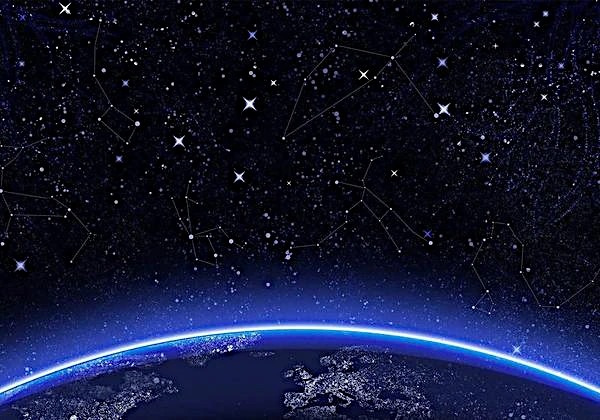
It seems like space begins beyond Earth's atmosphere, but that's not a good definition because as altitude increases, the atmosphere becomes less dense without really disappearing; it gradually thins out.
The atmosphere begins at the Earth's surface (troposphere from 0 km to 20 km altitude) and extends to extremely high altitudes (exosphere from 1000 km to 50,000 km altitude).
Based on data collected by the Soho mission, a Franco-Russian team calculated that the atmosphere extends up to 630,000 km beyond Earth (1.5 times farther than the Moon).
The atmosphere thins out into space to form a very sparse cloud of hydrogen atoms (10 to 70 atoms per cm³) called the "geocorona."
At the level of the Moon, there are only 200 atoms per cubic decimeter, almost a vacuum.
Space tourism began on July 11, 2021!
Richard Branson and his SpaceShipTwo (SS2) VSS Unity have more than 600 clients ready to pay $250,000 to visit space. On July 20, 2021, a $28 million seat was auctioned off to accompany Jeff Bezos into space (first space tourism flight by Blue Origin).
Space is located at the boundary between aeronautical flight (airplanes) and astronautical flight (satellites). This boundary is called the Kármán Line (Theodore von Kármán, Hungarian engineer and physicist 1881-1963). This imaginary boundary has been calculated at 100 km above the Earth's surface. It corresponds to the altitude at which the atmosphere becomes too thin for aeronautics. An airplane can only stay in flight by being supported by the surrounding air, with its wings providing lift. The higher an airplane flies, the less lift the rarefied air provides, requiring an increasingly higher speed to maintain lift and compensate for the decrease in air density as it climbs in altitude; otherwise, gravity pulls it down.
The question then is: at what speed must one travel in the atmosphere to be supported by aerodynamic lift?
The airplane must reach orbital velocity.
The Kármán Line marks the altitude where the required flight speed equals orbital velocity. To place a satellite in orbit, it must be given a minimum speed to complete its orbit. This speed must approach 7.9 km/s (28,440 km/h). For the satellite not to be slowed down in its path by atmospheric friction, it must be positioned above the atmosphere, at least 100 km above Earth.
In 2021, space tourism takes passengers slightly below 100 km, so these are suborbital flights.
N.B.:
Lift = 1/2 atmospheric density (in kg/m³) x reference area (in m²) x lift coefficient (unitless) x the square of velocity (in m/s).